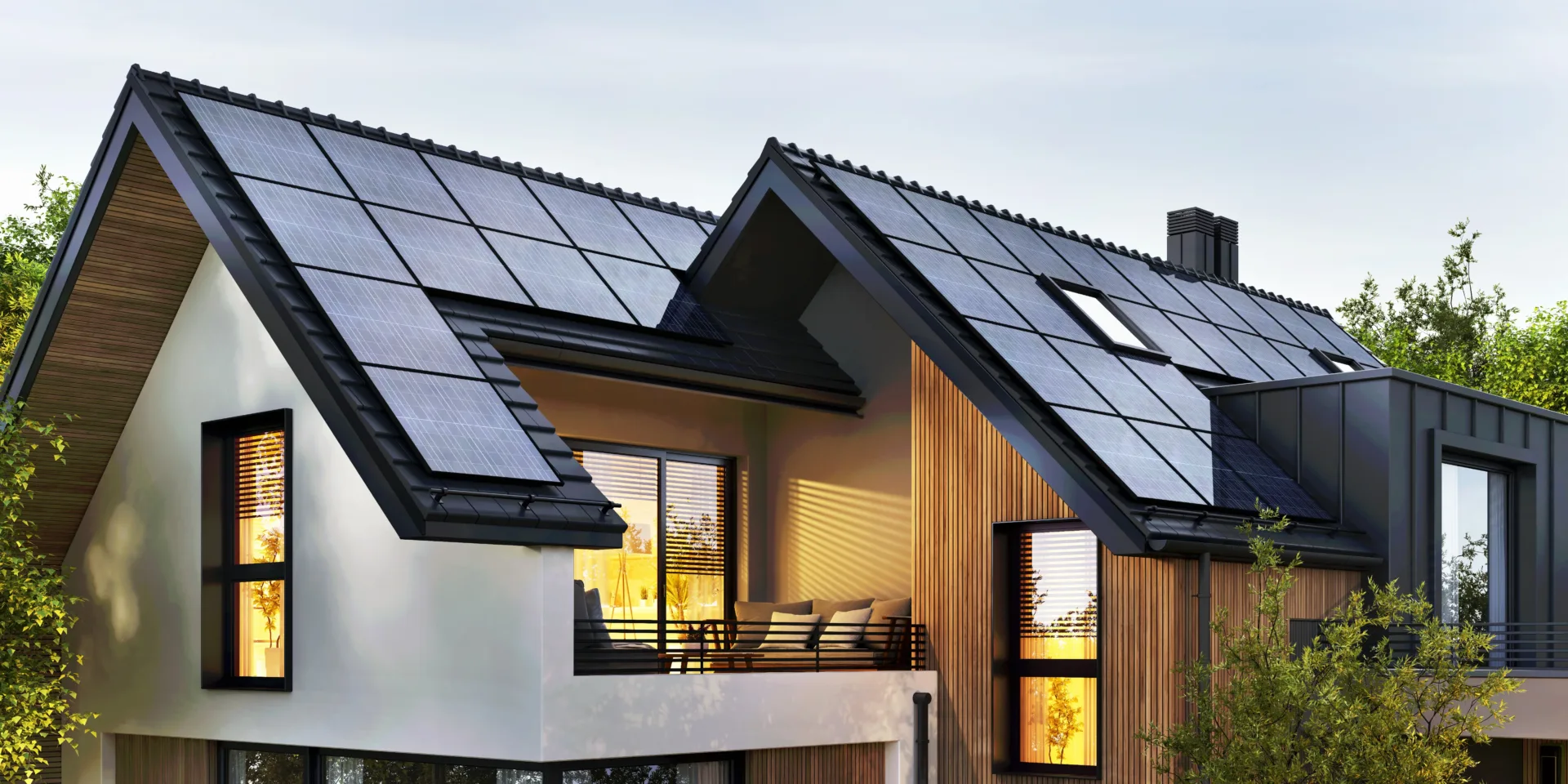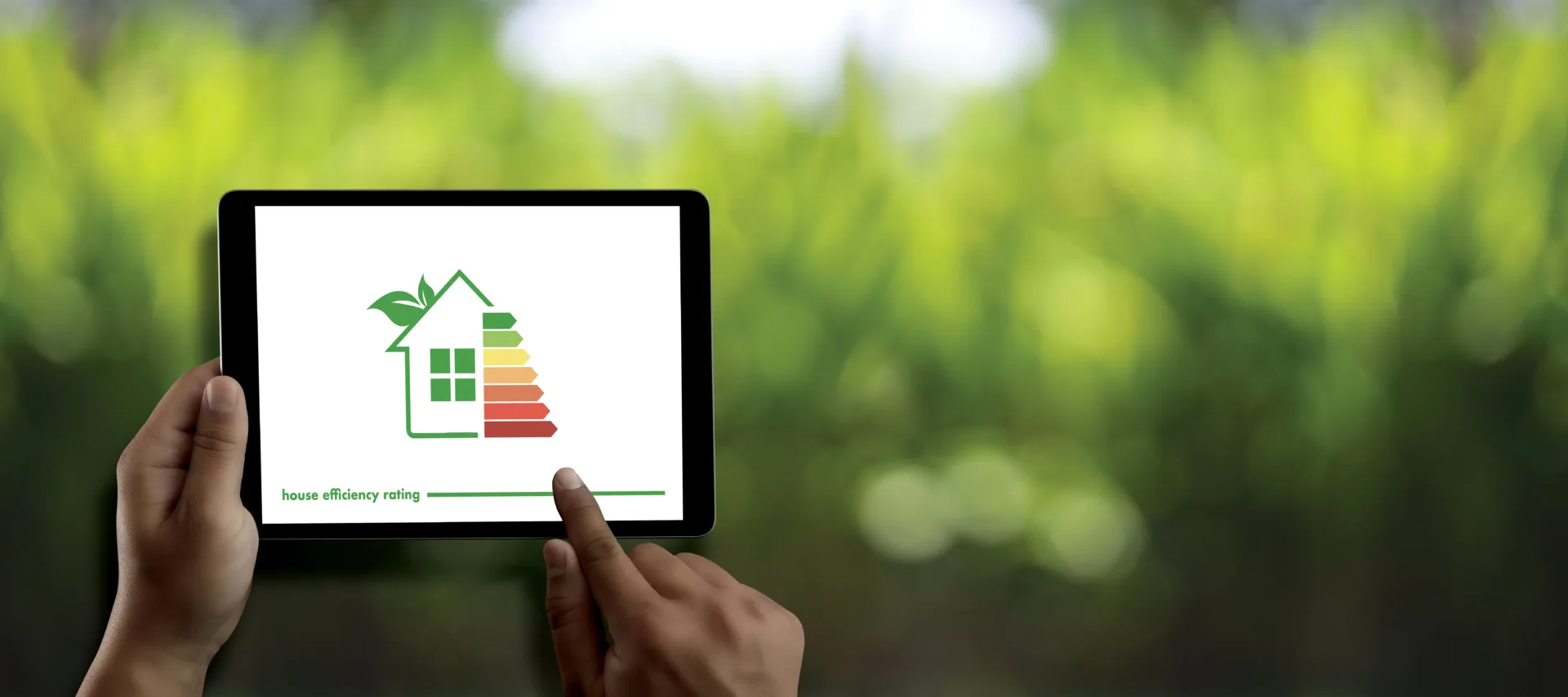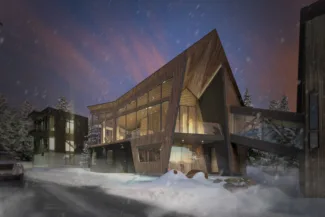I frequently find myself elucidating the components, tactics, and theories involved in designing a house or building with net zero carbon emissions to my clients. I realized that, to the best of my knowledge, there isn’t a comprehensive source that provides even a succinct overview of the topic, which I can confidently recommend to my clients for further self-research.
Thus, we present this admittedly incomplete and non-exhaustive guide—or rather, a growing knowledge base—which we plan to continually expand and update, aimed at designing and constructing a zero carbon footprint home or small building.”

Net Zero and Carbon Neutral Concepts Net Zero Emissions Goals Weather neutral long-term strategy.
Before we go further, it should also be noted that this field and its technology are constantly evolving, as are the demands of clients, users, and occupants. Therefore, the information in this article may become outdated rapidly, particularly in light of the global race to achieve net-zero carbon emissions by 2050.”
So grab your beverage of choice and let’s get into it!
Table of Contents
What does a Net Zero Carbon footprint building mean?
A zero-carbon footprint house is a remarkable accomplishment in sustainable architecture that aims to minimize its environmental impact. Let’s take a closer look at what defines such a building.
Net-zero Carbon Emissions:
At its core, a zero-carbon house seeks to achieve net-zero carbon emissions throughout its entire lifecycle. This means that the total amount of carbon dioxide (CO₂) released during construction, operation, and eventual demolition or recycling is offset by the carbon sequestration or renewable energy generation associated with the house.
Energy Efficiency and Conservation:
A zero-carbon home prioritizes energy efficiency by reducing energy consumption through smart design, insulation, and efficient appliances. Passive design principles play a crucial role in this. Proper orientation, insulation, and natural ventilation minimize the need for active heating or cooling systems. Energy conservation practices include using LED lighting, energy-efficient appliances, and smart controls.
Renewable Energy Integration:
The house generates its own energy using renewable sources. Solar panels, wind turbines, or geothermal heat pumps contribute to electricity production. Excess energy can be stored in batteries or fed back into the grid.
Embodied Carbon Consideration:
Beyond operational energy, a zero-carbon house evaluates the embodied carbon in its materials. Embodied carbon refers to the emissions associated with manufacturing, transportation, and construction. Sustainable materials with low embodied carbon are preferred.
All-Electric Approach:
A zero-carbon home avoids the use of fossil fuels. It relies solely on electricity for heating, cooling, cooking, and water heating. Gas-based systems are replaced with electric alternatives.
Carbon Sequestration and Offsetting:
Some zero-carbon houses actively sequester carbon, such as using timber or other materials that store carbon. Carbon offsetting through tree planting or other initiatives compensates for any remaining emissions.
Holistic Design and Lifestyle Choices:
In addition to technical aspects, a zero-carbon house encourages sustainable living. Residents adopt eco-friendly practices, such as reducing waste, conserving water, and supporting local ecosystems.
Certification and Monitoring:
Some zero-carbon homes seek certification, such as LEED (Leadership in Energy and Environmental Design) or Passivhaus. Regular monitoring ensures the house maintains its zero-carbon status.
In summary, a zero-carbon footprint house combines innovative design, renewable energy, and conscious living to create a harmonious balance between human comfort and environmental responsibility.
Government incentives for building net zero carbon footprint houses
Governments around the world recognize the importance of promoting sustainable housing and offer various incentives to encourage the construction of net zero carbon footprint houses. Here are some notable examples:
Solar for All Grant Competition (U.S.):
The Biden-Harris Administration launched a $7 billion Solar for All Grant Competition to increase access to affordable, resilient, and clean solar energy for millions of low-income households. This initiative aims to lower energy costs, create jobs, advance environmental justice, and address the climate crisis by expanding residential solar programs in disadvantaged communities.
Energy-Efficient Windows Program:
Some governments provide grants or incentives specifically for installing energy-efficient windows. Windows are a key area for energy losses, and upgrading to efficient windows can significantly reduce energy consumption.
Energy Star and Federal Tax Credits:
The Energy Star program offers a Residential Renewable Energy Tax Credit of up to 30% for homeowners who invest in renewable energy systems. Federal tax credits incentivize eco-friendly, net-zero homes by providing financial relief for energy-efficient upgrades.
Building Energy Efficiency Programs:
The Biden-Harris Administration has allocated $530 million for building energy efficiency through the Latest and Zero Building Energy Codes program. This program aims to modernize America’s building stock by encouraging state and local action on building codes, making buildings more resilient to extreme weather events while saving energy costs.
Methods to achieve net zero carbon footprint
Building a zero-carbon house involves thoughtful planning and strategic choices. Here are essential components to consider when constructing a net-zero home:
Energy-Efficient Home Design:
From the outset, prioritize energy efficiency using sustainable design principles. Optimize layout, orientation and materials to minimize energy consumption. Implement efficient insulation methods for thermal performance. Strategic window placement, shading and roof overhangs regulate indoor temperatures. When possible, exterior sunshade elements on the facades exposed to direct sunlight can greatly reduce the loading placed on the HVAC and indoor climate systems.
Renewable Energy Resources:
In order to decrease our carbon footprint, it is important to consider the utilization of renewable energy sources. One such source is solar panels, which are particularly effective in areas with abundant sunlight, while wind turbines and geothermal systems are also alternative options that can provide clean energy. By implementing these renewable energy sources, we can reduce our reliance on non-renewable energy, helping to protect the environment and create a more sustainable future.
All-Electric Approach:
Make the home all-electric to eliminate reliance on gas. The use of electric tankless ‘on-demand’ or ‘instantaneous’ water heaters are a great option for all-electric building design. Careful consideration of the hot water requirements and load times of the building function need to be considered that the on-demand unit can handle peak operation times. Induction kitchen appliances are a great alternative to gas-source cooking stoves or hobs.
Airtight and Insulated Homes:
Ensure your home is well-insulated and airtight to minimize energy loss. Adhesive flashing, metal flashing, and sealants around windows should be adequately designed and properly installed to reduce potential window leaking.
Embodied Carbon Consideration:
Choose building materials and processes with low embodied carbon. These may include:
- Timber: Sustainably sourced wood is renewable and can store carbon.
- Bamboo: Fast-growing and renewable, bamboo has a low carbon footprint.
- Recycled Materials: Using recycled steel, glass, or plastic reduces the need for new raw materials.
- Natural Stone: Locally sourced stone has a lower footprint due to reduced transportation.
- Straw Bales: Straw is a by-product of grain production and is used in natural building methods.
Materials with high embodied carbon footprint are those that require significant energy to produce, resulting in substantial greenhouse gas emissions throughout their lifecycle. Here are some examples:
- Reinforced Concrete: Manufacturing cement releases large amounts of CO2, especially during the calcination stage where limestone is transformed into calcium oxide.
- Steel: The production of steel, particularly when using fossil fuels in furnaces, contributes to high levels of CO2 emissions.
- Aluminium: Similar to steel, the production of aluminium is energy-intensive and results in high embodied carbon.
- Plastics: The extraction and treatment of the minerals used in plastics are also energy-intensive processes
Certification:
Heat Pumps:
Active vs. Passive
When planning a net zero carbon home, it’s essential to understand the difference between passive and active methods of energy conservation. Let’s delve into these strategies:
Passive Design Strategies:
Passive measures utilize the physical and thermal properties of the building envelope and its surroundings. These techniques aim to maintain comfortable indoor temperatures without relying on energy-intensive electrical processes. The key components of passive design include optimizing insulation, airtightness, and orientation of the building envelope to minimize heat transfer, using well-placed windows, vents, and openings for natural ventilation, leveraging sunlight for heating during colder months by positioning windows strategically, incorporating materials such as concrete or stone that absorb and release heat slowly to stabilize indoor temperatures, employing overhangs, louvers or vegetation to block excessive solar radiation for shading, and maximizing daylight to reduce reliance on artificial lighting for natural lighting. Passive design is a cost-effective, sustainable, and significant contributor to achieving net-zero carbon emissions.
Active Design Strategies:
Active methods refer to the use of mechanical and technological systems to regulate environmental conditions within a building. These systems require energy input and include heating, ventilation, and air conditioning (HVAC) for temperature control, lighting systems for artificial lighting, renewable energy systems like solar panels, wind turbines, or geothermal heat pumps, and heat pumps that efficiently transfer heat between indoor and outdoor environments. Although active strategies are necessary, they consume energy and contribute to carbon emissions. However, combining active and passive approaches can ensure optimal energy efficiency and comfort.
In summary, passive design prioritizes natural elements and architectural features, while active systems provide additional support. A well-balanced integration of both approaches leads to a truly sustainable and zero-carbon home.
Checklist of Active Strategies to Consider

Renewable Energy Systems:
- Solar Panels: Install photovoltaic panels on the roof to generate electricity from sunlight.
- Wind Turbines: If feasible, consider wind turbines to harness wind energy.
- Geothermal Heat Pumps: Utilize geothermal energy for heating and cooling.
- Hydroelectric Systems: If near a water source, explore hydroelectric power options.
Energy-Efficient Appliances and Lighting:
- Choose appliances with high energy efficiency ratings (e.g., ENERGY STAR-rated or equivalently rated appliances).
- Opt for LED or CFL bulbs for lighting, reducing electricity consumption.
Heat Pumps and HVAC Systems:
- Use heat pumps for efficient heating and cooling.
- Implement a well-designed HVAC system with zoned controls for optimal temperature regulation.
Energy Monitoring and Smart Controls:
- Install energy monitoring systems to track usage and identify areas for improvement.
- Use smart thermostats and lighting controls to optimize energy usage.
- Use smart controls for solar shading devices.
High-Performance Insulation and Airtightness:
- Invest in quality insulation materials for walls, roofs, and floors.
- Ensure proper airtightness to prevent heat loss or gain.
- In colder climates consider ventilated roofs.
Double-Pane or Triple-Glazed Windows:
- Choose energy-efficient windows with low U-values to minimize heat transfer.
- Properly seal windows to prevent drafts.
- Consider solar shading.
Efficient Water Heating:
- Consider solar water heaters or heat pump water heaters.
- On-demand or instantaneous water heaters
- Insulate hot water pipes to reduce heat loss.
Energy Storage Systems:
- Install battery storage systems to store excess energy from renewable sources.
- Use stored energy during peak demand or when renewable generation is low.
Passive Solar Design Integration:
- Combine active and passive strategies for optimal results.
- Align solar panels and windows to maximize sunlight exposure.
Embodied Carbon Consideration:
- Evaluate the carbon footprint of building materials used in construction.
- Choose low-carbon materials and consider their life cycle impact.
Calculating Loads
Calculating the electrical loads of a home or building can seem like a daunting task. So I want to include some advice about how to go about this. It’s important to remember that these are going to be approximations, as the usage fluctuates based on time of year, occupancy, and other factors.
Let’s delve into the equations for calculating electrical loading in housing:
Electrical Load vs. Electrical Capacity:
Electrical Load:
- This refers to the total power that all electrical devices in your house would draw if they were all operating simultaneously.
Electrical Capacity:
- It’s the maximum power that your service panel (also known as the electrical panel) can supply at one time.
- Electricians measure load and capacity in units of current (amperes or amps). Residential voltage remains constant, so we use volt-amperes (VA) as a unit of measurement (which is essentially synonymous with watts).
- To find your existing panel capacity, check the main breaker in your panel. The current rating marked on the breaker represents the panel’s capacity. The minimum allowed by the National Electrical Code (NEC) for new residential panels is 100 amps, with 200 amps being the standard for new construction1.
Calculating Electrical Load:
- Start by determining the power ratings (in watts) of individual appliances you plan to use.
- Sum up the power ratings for all appliances.
- Consider daily usage hours for each appliance.
- Apply a diversity factor (which accounts for the likelihood that not all appliances will run simultaneously).
- Here’s the formula for calculating electrical load:
Electrical Load =Sum of Power Ratings × Sum of Daily Usage Hours × Diversity Factor
Example Calculation:
Let’s say you have the following appliances:
- Refrigerator: 800 watts (used 24 hours a day)
- Lighting: 1,200 watts (used 6 hours a day)
- Air conditioner: 3,000 watts (used 4 hours a day)
- New electric water heater: 3,000 watts (used 1 hour a day)
Total Existing Load:
- Refrigerator: 800 watts × 24 hours = 19,200 VA
- Lighting: 1,200 watts × 6 hours = 7,200 VA
- Air conditioner: 3,000 watts × 4 hours = 12,000 VA
- New electric water heater: 3,000 watts × 1 hour = 3,000 VA
- Subtotal Existing Load: 19,200 VA + 7,200 VA + 12,000 VA + 3,000 VA = 41,400 VA
Diversity Factor:
- First 8,000 VA of existing load at 100%: 8,000 VA
- Remaining existing load at 40% (15,000 VA – 8,000 VA = 7,000 VA): 7,000 VA × 40% = 2,800 VA
Total Existing Load:
- 10,800 VA (41,400 VA – 8,000 VA + 2,800 VA)
- Convert 10,800 VA to amperes (10,800 VA ÷ 240 Volts ≈ 45 amps).
Once you have determined the electrical load, you can use this information to size renewable energy systems mentioned above, such as solar panels (photovoltaics). You may also consider a factor for over-producing electricity from your system that may be used to flow back to the grid, essentially reversing your electrical meter.
Can smart home systems improve efficiency in zero carbon footprint homes?
Smart home systems play a significant role in enhancing the efficiency of zero-carbon footprint homes. Let’s explore how:
Energy Management:
- Smart thermostats, lighting controls, and appliances optimize energy usage.
- They adjust settings based on occupancy, time of day, and weather conditions.
- Automated energy management reduces waste and ensures efficient operation.
Real-Time Monitoring:
- Smart systems provide real-time data on energy consumption.
- Homeowners can identify inefficiencies and take corrective actions promptly.
- Monitoring helps maintain zero-carbon goals.
Load Shifting and Demand Response:
- Smart systems allow load shifting by running appliances during off-peak hours.
- During high-demand periods, they participate in demand response programs to reduce strain on the grid.
- This contributes to overall energy efficiency.
Solar Panel Integration:
- Smart inverters and monitoring systems enhance the performance of solar panels.
- They track solar generation, battery storage, and grid interactions.
- Optimized solar utilization aligns with zero-carbon objectives.
Home Automation and Occupancy Sensors:
- Lights, HVAC, and other systems are activated only when needed.
- Occupancy sensors prevent energy wastage in unoccupied rooms.
- Smart automation ensures efficient resource utilization.
Water Management:
- Smart irrigation systems adjust watering schedules based on weather forecasts.
- Leak detection sensors prevent water wastage.
- Water collection from roofs and gutter systems into cisterns.
- Efficient water use complements zero-carbon efforts.
Integration with Electric Vehicles (EVs):
- Smart charging stations for EVs optimize charging times.
- They balance grid demand and reduce strain during peak hours.
- EVs charged with renewable energy contribute to zero-carbon living.
Control of solar-shading devices
- Smart home systems can control interior roller blinds and black-out devices that can greatly improve the occupant’s comfort.
- They can also be designed to control exterior sun-shading baffles or shutters to reduce solar gain.
The Role of AI in Net Zero Buildings
AI can play a significant role in designing and constructing net-zero homes and buildings. While AI is still relatively knew, it is yet to be seen the extent of how AI will improve or change the industry as a whole and therefor the design, construction and maintenance of net zero buildings. Here’s a snapshot of how AI contributes to sustainable architecture:
Energy Efficiency Modeling:
AI can predict and optimize a building’s energy consumption, helping architects design structures that use less energy.
Material Optimization:
Through machine learning, AI can suggest materials that reduce waste and improve sustainability, like the use of local wood and environmental concrete in Powerhouse Telemark.
Performance Monitoring:
AI systems can monitor a building’s performance in real-time, ensuring it operates at peak efficiency and suggesting adjustments as needed.
Lifecycle Analysis:
AI can assess the environmental impact of a building over its entire lifecycle, from construction to demolition, aiding in the selection of materials and designs with lower carbon footprints.
Gimmicks to be Aware Of
When designing a zero-carbon footprint house, it’s essential to avoid certain gimmicks or misconceptions that may hinder your sustainability goals. Here are some pitfalls to steer clear of:
Superficial Green Features:
Greenwashing: Be wary of products or materials labeled as “green” without proper certification or evidence. Verify claims and choose genuinely sustainable options
Overreliance on Technology:
While technology plays a role, don’t solely rely on gadgets to achieve zero carbon. Energy-efficient design matters more than high-tech solutions. https://robbreport.com/shelter/home-design/5-zero-carbon-homes-1234662519/
Ignoring Embodied Carbon:
Focus not only on operational energy but also on embodied carbon (emissions from materials and construction).
Opt for low-carbon materials and consider their life cycle impact.
Carbon Offsetting as a Shortcut:
Allowable offsite solutions (carbon offsetting) can be controversial.
Prioritize reducing emissions directly rather than relying solely on offsets.
Neglecting Insulation and Airtightness:
Proper insulation and airtightness are fundamental.
Don’t compromise on these basics for flashy features.
Excessive Glazing:
While natural light is essential, too much glazing can lead to heat loss or gain.
Balance aesthetics with energy efficiency.
Ignoring Passive Design Principles:
Active systems are crucial but don’t overlook passive design.
Proper orientation, shading, and thermal mass contribute significantly.
How to design eco-houses – Passivhaus ad Zero Carbon Houses
Complex Systems with High Maintenance:
Avoid intricate systems that require constant upkeep. If something tends to break easily, it will often not be properly maintained, and therefore will not contribute to the overall life of the building. Simplicity often leads to better long-term performance.
EXAMPLES OF COMPLETED NET ZERO CARBON BUILDINGS
Examples of completed net zero carbon buildings
Here are some inspiring examples of completed net zero carbon buildings from around the world:
Powerhouse Telemark
(Porsgrunn, Norway)
- The Powerhouse Telemark by Snøhetta slashes its yearly net energy consumption by 70% compared to similar offices, and is designed to produce more energy than it consumes over its lifespan. It achieves this through features like a solar energy-harvesting façade and roof, and a super-insulated structure with triple-glazed windows, aligning with its BREEAM Excellent certification for sustainability.
Powerhouse Telemark – Snøhetta (snohetta.com)
The Venus
(Manchester, UK):
- The Venus is a residential building in Manchester that achieves net zero by combining solar panels, energy-efficient design, and smart energy management. It demonstrates how urban housing can be sustainable and comfortable.
- The Unisphere
(Silver Spring, Maryland, USA):
- One of the largest net zero energy projects in the US, the Unisphere incorporates geothermal heat pumps, on-site solar energy, and an integrated control system for HVAC, lighting, and energy. It showcases the feasibility of large-scale net-zero buildings.
National Renewable Energy Laboratory (NREL)
(Colorado, USA):
- NREL’s Research Support Facility is a model for energy efficiency. It features advanced insulation, daylighting, and efficient HVAC systems. The building generates more energy than it consumes through solar panels and other renewable sources.
La Jolla Commons
(San Diego, California, USA):
- La Jolla Commons is a commercial office building designed for net zero energy consumption. It utilizes solar panels, energy-efficient lighting, and smart controls. The project demonstrates sustainable practices in the corporate sector3.
Indira Paryavaran Bhawan
(New Delhi, India):
- The Ministry of Environment and Forest’s headquarters in New Delhi is a net zero building. It integrates solar power, rainwater harvesting, and efficient cooling systems. The design emphasizes India’s commitment to sustainable development3.
Avasara Academy
(Lavale, Pune, India):
- Avasara Academy, an all-girls school, achieves net zero energy consumption. It combines solar panels, natural ventilation, and energy-efficient appliances. The project highlights the role of education in promoting sustainability3.
Floating Off-Grid Office
(Various Locations):
- This innovative office is designed to float on water, powered entirely by solar energy. It demonstrates how unconventional structures can achieve net zero carbon emissions.
- Hempcrete House (Various Locations):
- Some houses are constructed using hempcrete, a sustainable material made from hemp fibers and lime. These homes have a minimal carbon footprint due to the carbon sequestration properties of hemp.
Construction Industry Council’s (CIC) Zero Carbon Building (ZCB)
(Hong Kong)
- Inaugurated in June 2012, the Zero Carbon Building (ZCB) represents a landmark initiative by the Construction Industry Council (CIC) to demonstrate cutting-edge zero carbon building technologies and enhance public awareness of sustainable living practices within Hong Kong.”
Conclusion
In conclusion, it is evident that the goal of net zero carbon footprint building is a complicated and multi-faceted topic. Many of the means and methods to achieve this goal are still being developed and refined. For some of these methods, the jury is still out on their total lifespan effectiveness. Time will tell which of these methods will survive and also reveal new technologies that may make some of these irrelevant.
Though it may seem difficult to pin down where to focus on achieving your goal of net zero carbon footprint, using the suggestions and information in this guide will help pave the way to net zero carbon.
Thanks for reading and reach out to us if you have any questions!
Recommended Readings
Here are five valuable resources to guide you in designing a zero-carbon footprint house:
- “Build Beyond Zero: New Ideas for Carbon-Smart Architecture” by Bruce King and Chris Magwood:
- This book re-envisions buildings as practical climate solutions, emphasizing carbon-smart design. It explores materials, supply chains, and the potential for net carbon storage in our built environment1.
- “Designing Zero Carbon Buildings: Embodied and Operational Emissions in Achieving Zero Emissions” by Ljubomir Jankovic:
- This revised edition combines embodied and operational emissions, providing a structured approach to achieving zero emissions. It covers simulation methods and practical examples for achieving zero carbon in buildings2.
- “Making Better Buildings: A Comparative Guide to Sustainable Construction for Homeowners and Contractors” by Chris Magwood and Jen Feigen:
- “The Zero-Carbon House” by Martin Godfrey Cook:
- This book includes case studies, examples of low-carbon lifestyles, and an overview of zero-carbon principles. It explores how to achieve zero carbon on a global scale4.
- “Meet the Zero-Carbon Homes That Are Changing How We Live” (Article on Robb Report):
- Learn from homeowners and architects about what it takes to create zero-carbon homes. Explore real-world examples and innovative approaches to sustainable living5.
Remember, these resources offer insights, practical advice, and inspiration for designing environmentally friendly homes. Happy reading!
Other Links and Useful Information
- https://en.wikipedia.org/wiki/Paris_Agreement
- https://www.iea.org/reports/global-energy-and-climate-model/net-zero-emissions-by-2050-scenario-nze
- https://www.usgbc.org/programs/leed-zero
- https://knowledge.bsigroup.com/categories/net-zero-in-energy-and-utilities
- https://www.usgbc.org/about/priorities/net-zero
- https://unfccc.int/news/architects-to-phase-out-carbon-by-2050
- https://www.arup.com/markets/cities/net-zero-cities
- https://www.aia.org/design-excellence/climate-action/zero-carbon
- https://www.dezeen.com/2020/12/19/dezeens-top-10-carbon-neutral-buildings-2020-reviews/
Citations
- https://zeroenergyproject.com/2020/05/20/four-steps-to-zero-carbon-homes-and-buildings/
- https://theconversation.com/how-net-zero-and-passive-houses-can-cut-carbon-emissions-and-energy-bills-148587
- https://ideas.repec.org/a/gam/jeners/v16y2023i9p3905-d1139866.html
- https://www.archdaily.com/994391/the-decarbonization-challenge-4-passive-strategies-for-energy-efficient-building-systems
- https://www.bbc.com/future/article/20211105-how-your-house-will-go-carbon-free
- https://www.archdaily.com/972553/net-zero-energy-and-net-zero-carbon-design-strategies-to-reach-performance-goals
- https://www.archdaily.com/994391/the-decarbonization-challenge-4-passive-strategies-for-energy-efficient-building-systems
- https://www.archdaily.com/977740/what-is-net-zero-architecture
- https://www.architectmagazine.com/practice/eight-questions-youll-hear-when-proposing-zero-carbon-design_o
- https://www.bbc.com/future/article/20211105-how-your-house-will-go-carbon-free
- https://urbanistarchitecture.co.uk/how-to-design-eco-houses-passivhaus-and-zero-carbon-houses/
- https://robbreport.com/shelter/home-design/5-zero-carbon-homes-1234662519/
- https://books.google.com/books/about/The_Zero_Carbon_House.html?id=6KN8AwAAQBAJ
- https://www.routledge.com/Designing-Zero-Carbon-Buildings-Embodied-and-Operational-Emissions-in-Achieving/Jankovic/p/book/9781032378701
- Build Beyond Zero: New Ideas for Carbon-Smart Architecture: King, Bruce, Magwood, Chris: 9781642832112: Amazon.com: Books
- https://www.energy.gov/articles/biden-harris-administration-announces-530-million-building-energy-efficiency-and
- https://www.hibbshomesusa.com/featured-news/financial-incentives-tax-credits-for-net-zero-homes/
- https://www.epa.gov/newsreleases/biden-harris-administration-launches-7-billion-solar-all-grant-competition-fund
- https://www.forbes.com/sites/forbestechcouncil/2021/12/10/smart-homes-reducing-carbon-footprint-and-expenses/
- https://www.energy.gov/energysaver/aim-zero-zero-energy-and-zero-energy-ready-homes
- https://www.yourhome.gov.au/live-adapt/zero-carbon
- https://www.re-thinkingthefuture.com/sustainable-architecture/a3289-5-net-zero-buildings-around-the-world/
- https://www.weforum.org/agenda/2021/09/how-to-build-zero-carbon-buildings/
- https://www.infogrid.io/blog/5-net-zero-building-examples-and-how-they-got-there
- IEA (2023), Global Energy and Climate Model, IEA, Paris https://www.iea.org/reports/global-energy-and-climate-model, Licence: CC BY 4.0
- https://copilot.microsoft.com/



